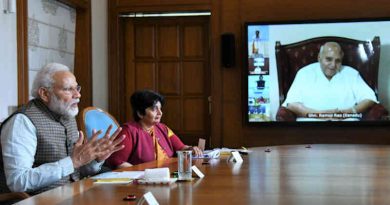How to Achieve Green Pandemic Recovery

A green pandemic recovery could cut up to 25 per cent of predicted 2030 greenhouse gas emissions and bring the world closer to meeting the 2°C goal of the Paris Agreement on Climate Change, a new UN Environment Programme (UNEP) report finds.
UNEP’s annual Emissions Gap Report 2020 finds that, despite a dip in 2020 carbon dioxide emissions caused by the Covid-19 pandemic, the world is still heading for a temperature rise in excess of 3°C this century.
However, if governments invest in climate action as part of pandemic recovery and solidify emerging net-zero commitments with strengthened pledges at the next climate meeting – taking place in Glasgow in November 2021 – they can bring emissions to levels broadly consistent with the 2°C goal.
By combining a green pandemic recovery with swift moves to include new net-zero commitments in updated Nationally Determined Contributions (NDCs) under the Paris Agreement, and following up with rapid, stronger action, governments could still attain the more-ambitious 1.5°C goal.
“UNEP’s Emissions Gap report shows that a green pandemic recovery can take a huge slice out of greenhouse gas emissions and help slow climate change. I urge governments to back a green recovery in the next stage of Covid-19 fiscal interventions and raise significantly their climate ambitions in 2021,” said Inger Andersen, UNEP’s Executive Director.
Such a green recovery would put emissions within the range that gives a 66 per cent chance of holding temperatures to below 2°C, but would still be insufficient to achieve the 1.5°C goal.
Measures to prioritize in green fiscal recovery include direct support for zero-emissions technologies and infrastructure, reducing fossil fuel subsidies, no new coal plants, and promoting nature-based solutions – including large-scale landscape restoration and reforestation.
So far, the report finds, action on a green fiscal recovery has been limited. Around one-quarter of G20 members have dedicated shares of their spending, up to 3 per cent of GDP, to low-carbon measures.
The report also finds that the growing number of countries committing to net-zero emissions goals by mid-century is a “significant and encouraging development”. At the time of report completion, 126 countries covering 51 per cent of global greenhouse gas emissions had adopted, announced or were considering net-zero goals.





